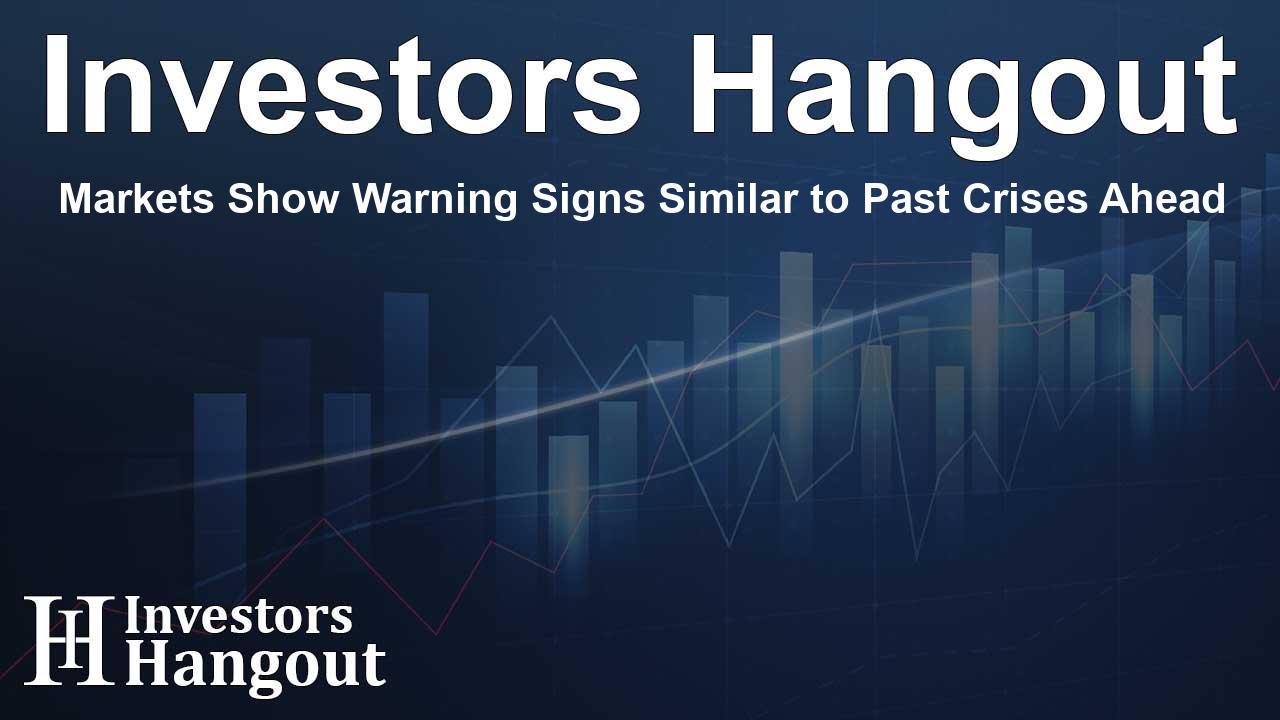Markets Show Warning Signs Similar to Past Crises Ahead

Identifying Red Flags in Today's Market
As we observe the market reaching new heights, it is essential to take a closer look at the underlying indicators that signal potential instability. One crucial measure, known as market breadth, reflects how many stocks are participating in this rally. Alarmingly, it has fallen below the levels seen in challenging years, marking parallels to historical downturns.
Equal-Weight Metrics and Their Implications
To grasp the extent of market concentration, consider the Invesco S&P 500 Equal Weight ETF (RSP). Its ratio compared to traditional market-cap-weighted indices, like the SPDR S&P 500 (SPY), has dipped to 0.292, a level we haven't seen since late 2008. In contrast, this ratio stood approximately 15% higher during the downturn of 2022.
Such an imbalance poses significant historical risks. Whenever market leadership consolidates to this extent, it has often preceded significant financial turmoil, as witnessed during the Dot-com bubble and the Great Recession. Investors should remain vigilant about this trend.
An additional statistic that warrants attention is that only 59% of companies within the S&P 500 index are currently trading above their 200-day moving average. This statistic suggests that more than 200 stocks in the index are experiencing downward momentum, even as the overall benchmark reaches record levels.
Strategies for Navigating Narrow Market Conditions
This situation is not unprecedented. Investors have faced similarly narrow markets in the past, leading to less than satisfactory returns over time. Reports indicate that when market concentration reaches such extreme levels, the subsequent decade often yields disappointing results. High-flying market rallies frequently transition into prolonged phases of underperformance or stagnation.
To safeguard investments, diversification becomes a critical tactic. This may involve reallocating some investments into equal-weight ETFs, like Xtrackers S&P 500 Equal Weight (CPTFF), or shifting focus toward value and small-cap stocks that provide exposure beyond the typical mega-cap firms.
Historically, these diversification strategies thrive when market concentration diminishes and leadership rotates. Alternatives such as adopting dynamic trading strategies, employing hedges, or reducing reliance on passive investments can help mitigate risks inherent in the current market landscape.
However, investors should proceed with caution and not hastily dive into small-cap investments. While large-cap companies face what is known as the 'winner's curse,' small-caps are increasingly struggling financially. Currently, around 43% of stocks in the Russell 2000 index are facing losses, compared to only 6% within the S&P index, amplifying the dangers associated with 'diworsefication.'
Frequently Asked Questions
What is market breadth and why is it significant?
Market breadth measures how many stocks are participating in a price movement within an index, providing insight into the market's overall health and underlying trends.
How does the Invesco S&P 500 Equal Weight ETF compare to traditional indices?
The Invesco S&P 500 Equal Weight ETF (RSP) offers a different investment approach, as it considers all constituent companies equally, rather than weighing them based on market capitalization like traditional indices.
What are some effective strategies for diversifying in a narrow market?
Some strategies include investing in equal-weight ETFs like CPTFF, exploring value and small-cap stocks, and employing dynamic trading strategies.
What does the 200-day moving average indicate for the S&P 500?
The 200-day moving average serves as a trend indicator. A level below 60% suggests that a significant number of stocks are underperforming, implying potential market weakness.
Why is it important to be cautious with small-cap investments right now?
Caution is warranted as many small-cap companies are currently unprofitable, raising the risk that investing in them could lead to further losses, especially in a market characterized by volatility.
About The Author
Contact Thomas Cooper privately here. Or send an email with ATTN: Thomas Cooper as the subject to contact@investorshangout.com.
About Investors Hangout
Investors Hangout is a leading online stock forum for financial discussion and learning, offering a wide range of free tools and resources. It draws in traders of all levels, who exchange market knowledge, investigate trading tactics, and keep an eye on industry developments in real time. Featuring financial articles, stock message boards, quotes, charts, company profiles, and live news updates. Through cooperative learning and a wealth of informational resources, it helps users from novices creating their first portfolios to experts honing their techniques. Join Investors Hangout today: https://investorshangout.com/
The content of this article is based on factual, publicly available information and does not represent legal, financial, or investment advice. Investors Hangout does not offer financial advice, and the author is not a licensed financial advisor. Consult a qualified advisor before making any financial or investment decisions based on this article. This article should not be considered advice to purchase, sell, or hold any securities or other investments. If any of the material provided here is inaccurate, please contact us for corrections.
